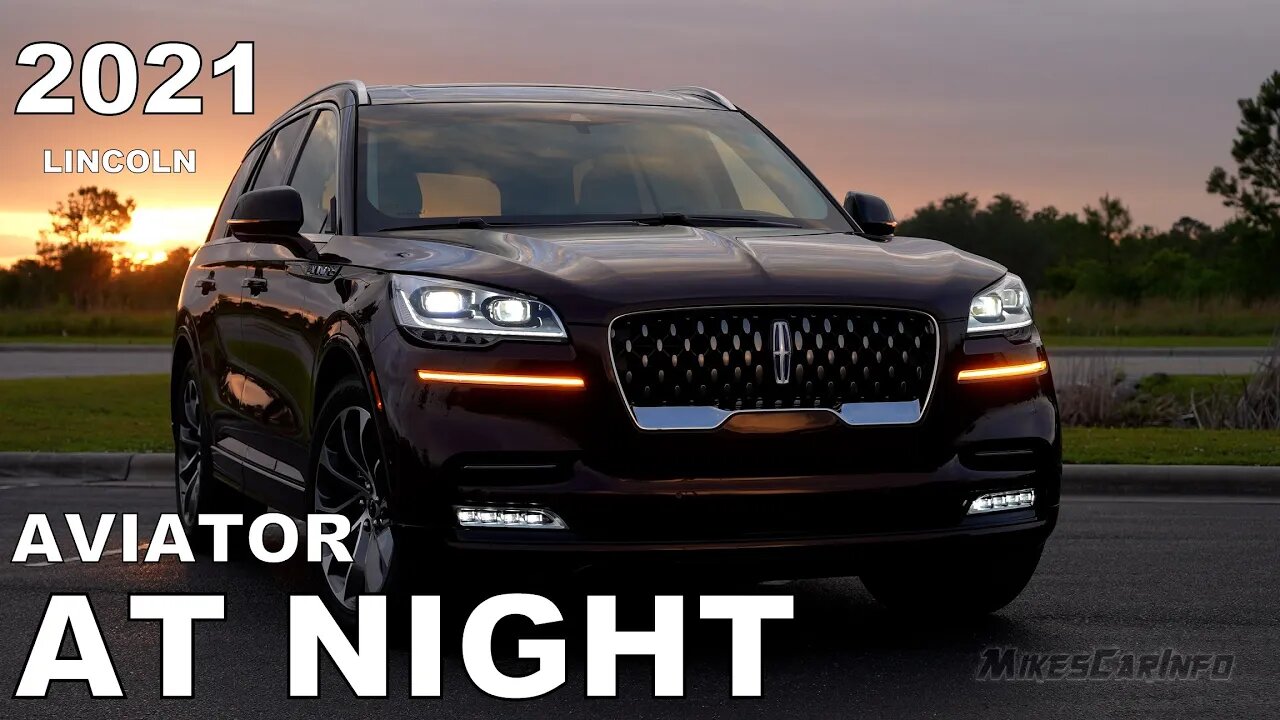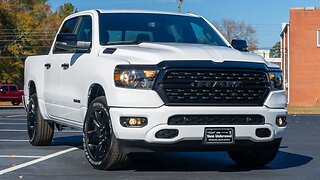Premium Only Content

AT NIGHT: 2021 Lincoln Aviator - Interior & Exterior Lighting Overview
Thoroughly Experience this Vehicle at Your Convenience.
Full Overview: https://youtu.be/ElkZG9FE8po
Based on a rear-wheel-drive architecture, Aviator offers a compelling combination of performance, capability and choice, with intelligent all-wheel drive available and the option of a gasoline or hybrid powertrain.
With the hybrid option, Aviator Grand Touring’s twin-turbocharged engine and advanced electrified technology takes the levels of performance even higher, with an impressive 494 combined horsepower and best-in-class 630 combined ft.-lbs. of torque.*
The powerful electric motor, with maximum output of 75 kilowatts and a 13.6-kilowatt-hour battery pack in Aviator Grand Touring, is designed to complement the performance of the twin-turbocharged 3.0-liter V6 engine. Together, they produce robust, effortless performance while maintaining a whisper-quiet cabin.
Phone As A Key offers additional functionality. Drivers can recall individual preferences for adjusting seat, side mirrors and steering column positions. Comfort and entertainment settings can be activated through the feature as well. If owners want to loan their Aviator to a family member or friend, the technology makes that equally effortless, too, as up to four “keys” are provided with each vehicle in addition to the standard smart key fobs.
Should a phone battery go dead, a passcode can be entered on the standard exterior keypad to gain entry, then a backup code can be entered on the center touch screen to start and drive the vehicle. If a phone is lost or stolen, Phone As A Key can be easily deleted, providing additional peace of mind for clients.
Available Adaptive Suspension, which uses a suite of 12 sensors that constantly monitor vehicle motion, body movement, steering, acceleration and braking activities. These sensors read the road 500 times per second and can automatically prompt setting adjustments up to 100 times per second. The suspension’s advanced pothole mitigation can sense when a wheel is dropping into a severe dip and stiffens the shock absorber to reduce the amount of drop, lessening the harshness of a tire strike. Each wheel responds independently, allowing the vehicle to tailor its response to any given road surface.
Available Lincoln-first Adaptive Suspension with Road Preview, which uses the forward-facing camera to read the road nearly 50 feet ahead to look for height deviations between two and eight inches and adjust the suspension to mitigate any unpleasant impact.
Available Air Glide Suspension, which offers the highest level of refinement by replacing traditional coil springs with guided air springs, enabling several preset ride heights for increased comfort and capability. An additional benefit, Dynamic Lower Entry, adds a new level of sophistication to Lincoln’s trademark embrace - upon approach, Aviator lowers to greet the driver. The convenience of this feature makes loading cargo easier as well.
An available upgrade, Lincoln Co-Pilot360 Plus, adds:
Adaptive cruise control with traffic jam assist, which guides Aviator using stop-and-go, lane-centering technology and speed sign recognition to scan speed limit signs along the roadway, adjusting speed based on the information obtained.
Evasive steering assist offers assistance to the driver to help avoid a collision with a slower or stopped vehicle ahead; it provides additional steering support when a collision cannot be avoided by braking alone.
Reverse brake assist can help stop the vehicle when backing up if Aviator’s integrated rear sensors detect an obstacle at the rear.
Active park assist plus removes the stress from parking by taking over steering, shifting, braking and acceleration functions with the touch of a button to navigate getting in and out of parallel and perpendicular parking spaces with ease.
Driving at night is made effortless with available Adaptive Pixel LED Headlamps, which allow the pattern of the beams to change, enabling two additional lighting technologies:
Adaptive dynamic bending lighting: Through the front camera, the vehicle reads the road ahead and, when sensing a corner, predicts where light is needed, allowing the headlamps to instantly adjust or bend.
Speed-dependent lighting: The intensity of the beam adjusts based on the speed of the vehicle; at faster speeds, light is directed to the road, while at slower speeds, headlamps adjust to illuminate more areas in front of the vehicle.
Aftermath by Vyra | https://soundcloud.com/vyramusic
Music promoted by https://www.free-stock-music.com
Creative Commons Attribution-ShareAlike 3.0 Unported
https://creativecommons.org/licenses/by-sa/3.0/deed.en_US
-
 44:59
44:59
MikesCarInfo
1 year ago $0.07 earned👉2024 RAM 1500 Night Edition Big Horn Crew Cab 4x4 -- Detailed Look
330 -
 LIVE
LIVE
Dear America
1 hour agoWe Are ALL Charlie Now! This Isn’t The End. We Will FIGHT FIGHT FIGHT
31,515 watching -
 LIVE
LIVE
The White House
1 hour agoPresident Trump and the First Lady Attend a September 11th Observance Event
2,969 watching -
 LIVE
LIVE
RealAmericasVoice
3 days agoHOME OF REAL NEWS
10,938 watching -
 LIVE
LIVE
Badlands Media
8 hours agoBadlands Daily: September 11, 2025
1,215 watching -
 LIVE
LIVE
Wendy Bell Radio
5 hours agoA Watershed Moment
9,370 watching -
 4:24
4:24
Bearing
5 hours agoCharlie Kirk ♥️
1.76K28 -
 LIVE
LIVE
The Mike Schwartz Show
54 minutes agoTHE MIKE SCHWARTZ SHOW with DR. MICHAEL J SCHWARTZ 09-11-2025
2,425 watching -
 LIVE
LIVE
Chicks On The Right
4 hours agoCharlie Kirk's assassination, the reaction, and where we all go from here.
3,040 watching -
 LIVE
LIVE
LFA TV
4 hours agoLFA TV ALL DAY STREAM - THURSDAY 9/11/25
6,339 watching